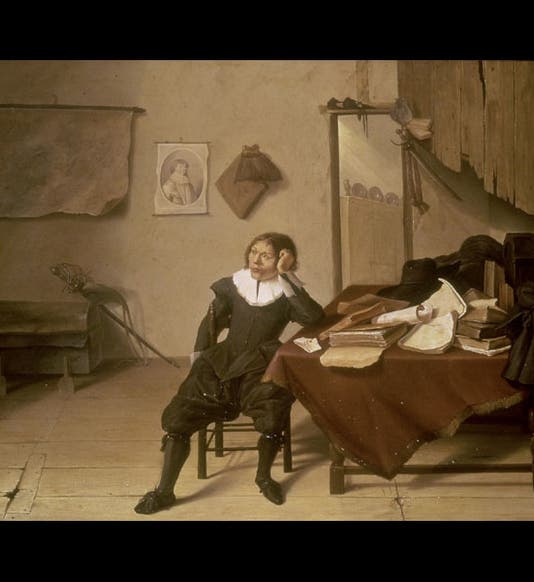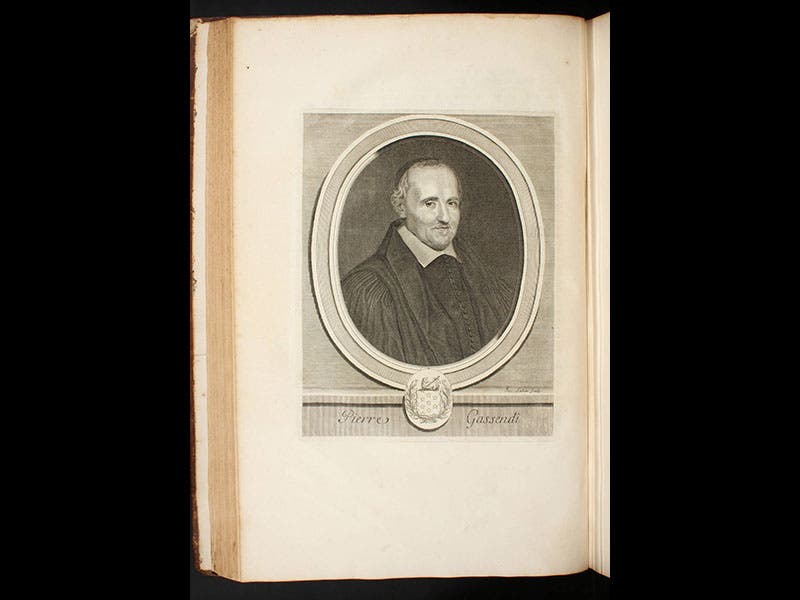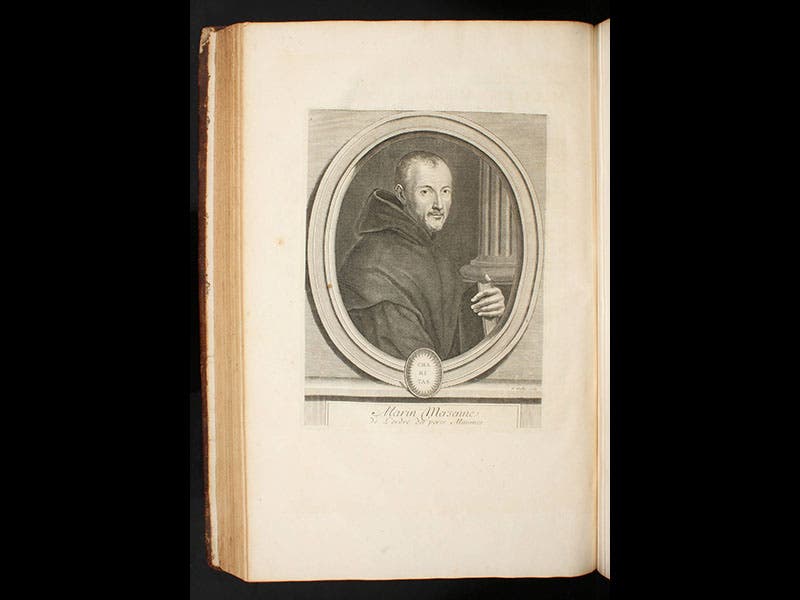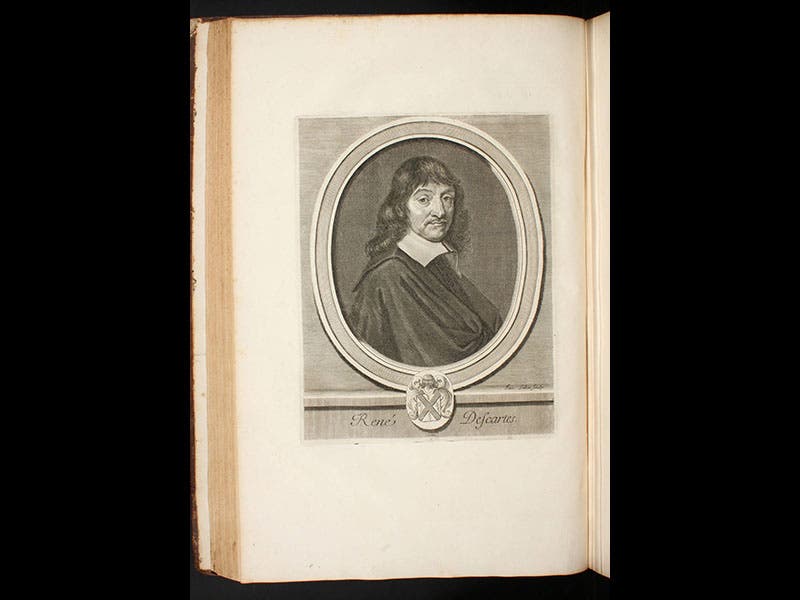Scientist of the Day - Isaac Beeckman
Isaac Beeckman, a Dutch natural philosopher, died May 19, 1637, at the age of 48. Beeckman came from a family of candle-makers, and he himself practiced that trade until he became a school-master, first in Rotterdam in 1620, then in Dordrecht in 1627. He died in 1637 without ever publishing a book. And yet Beeckman was a major influence in the development of the scientific revolution in France and the Netherlands.
In 1618, in Breda, Beeckman met a young French soldier, René Descartes. The two hit it off immediately, and Beeckman conveyed his practical knowledge and his adherence to atomism to the mathematically inclined Descartes. Descartes immediately wrote a short treatise, the Compendium musicae (written in 1619, but not published until 1650, and dedicated to Beeckman), which was inspired by Beeckman's opinion that consonance in music is determined not by abstract numerical ratios, but by vibrations in the air, which either coincide (pleasing) or produce beats (not so pleasing) . It was through Beeckman that Descartes later learned about Galileo's work in Italy, and when Beeckman received a copy of Galileo’s Dialogo (1632), very difficult to obtain in northern Europe after Galileo's condemnation, he passed it on to Descartes. Beeckman also met and corresponded with Pierre Gassendi, Marin Mersenne, and Constantijn Huygens (father of Christiaan), and all were greatly impressed by Beeckman's erudition and insight.
Beeckman kept a detailed journal from 1604 to 1634; it was rediscovered early in the 20th century and published in four volumes from 1939-53. Only then did historians begin to realize that Beeckman had anticipated many of his better known contemporaries in his understanding of musical theory and practice, atomism and mechanism, moving bodies and inertia, and the principles of the pendulum.
There seem to be no memorials to Beeckman anywhere, not in Middelburg, not in Dordrecht, not even in Breda, which seems a shame. When Klaas van Berkel published his excellent study, Isaac Beeckman on Matter and Motion, in 2013, his cover illustration was Jan Davidsz de Heem’s painting, Young Man Seated at a Table (1628; now in the Ashmolean Museum at Oxford). There is no reason to think that the young man is Beeckman, but the date is about right, so in lieu of an actual Beeckman portrait, we lead with the Young Man. Our other images show the figures on whom Beeckman had such an impact: Pierre Gassendi, Marin Mersenne, and René Descartes. All three of these engraved portraits are from Charles Perrault, Les hommes illustres (1696-1700), in our History of Science Collection.
And no, Beeckman is not related to yesterday’s scientist of the day, Arnold Beckman.
Dr. William B. Ashworth, Jr., Consultant for the History of Science, Linda Hall Library and Associate Professor, Department of History, University of Missouri-Kansas City. Comments or corrections are welcome; please direct to ashworthw@umkc.edu.










